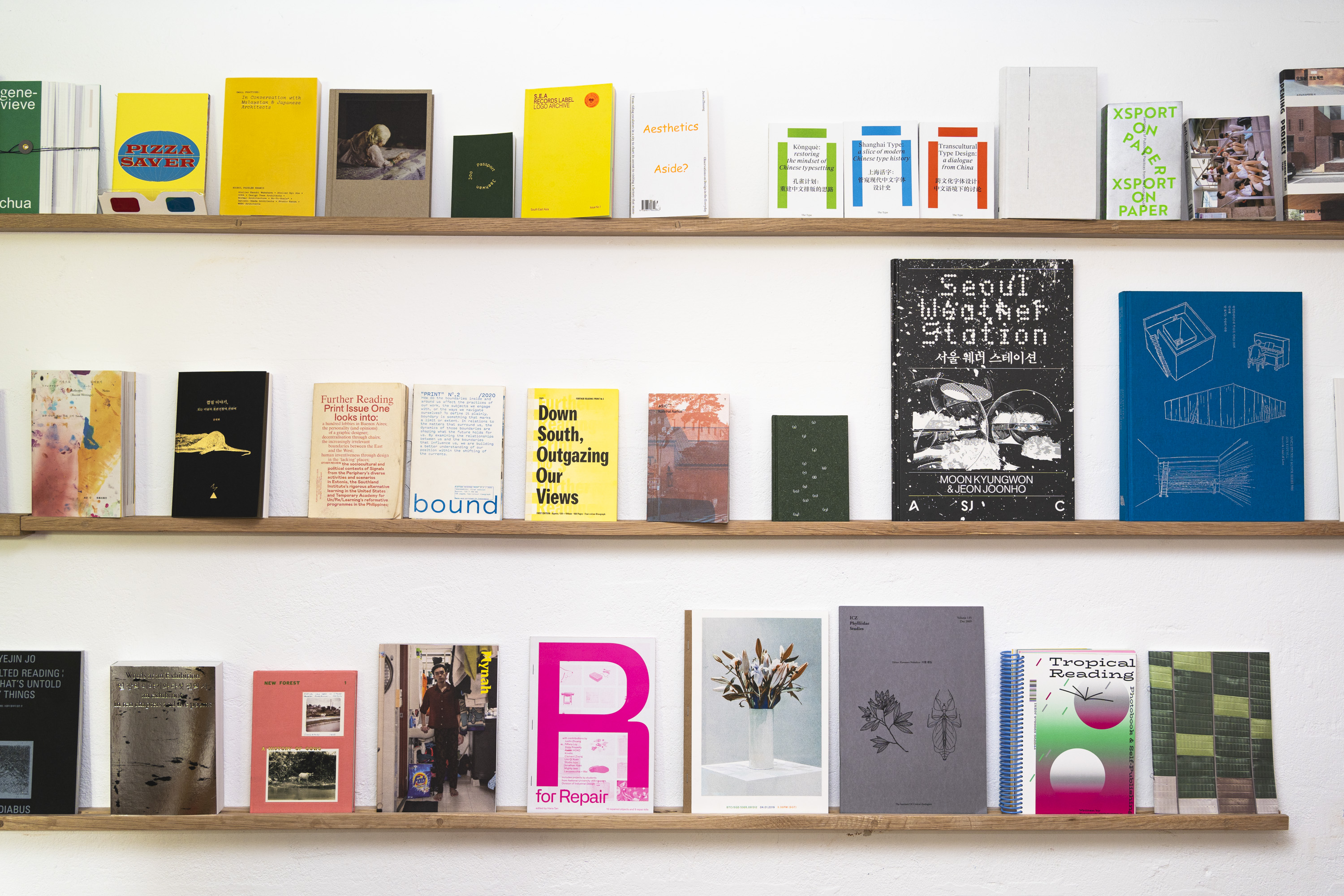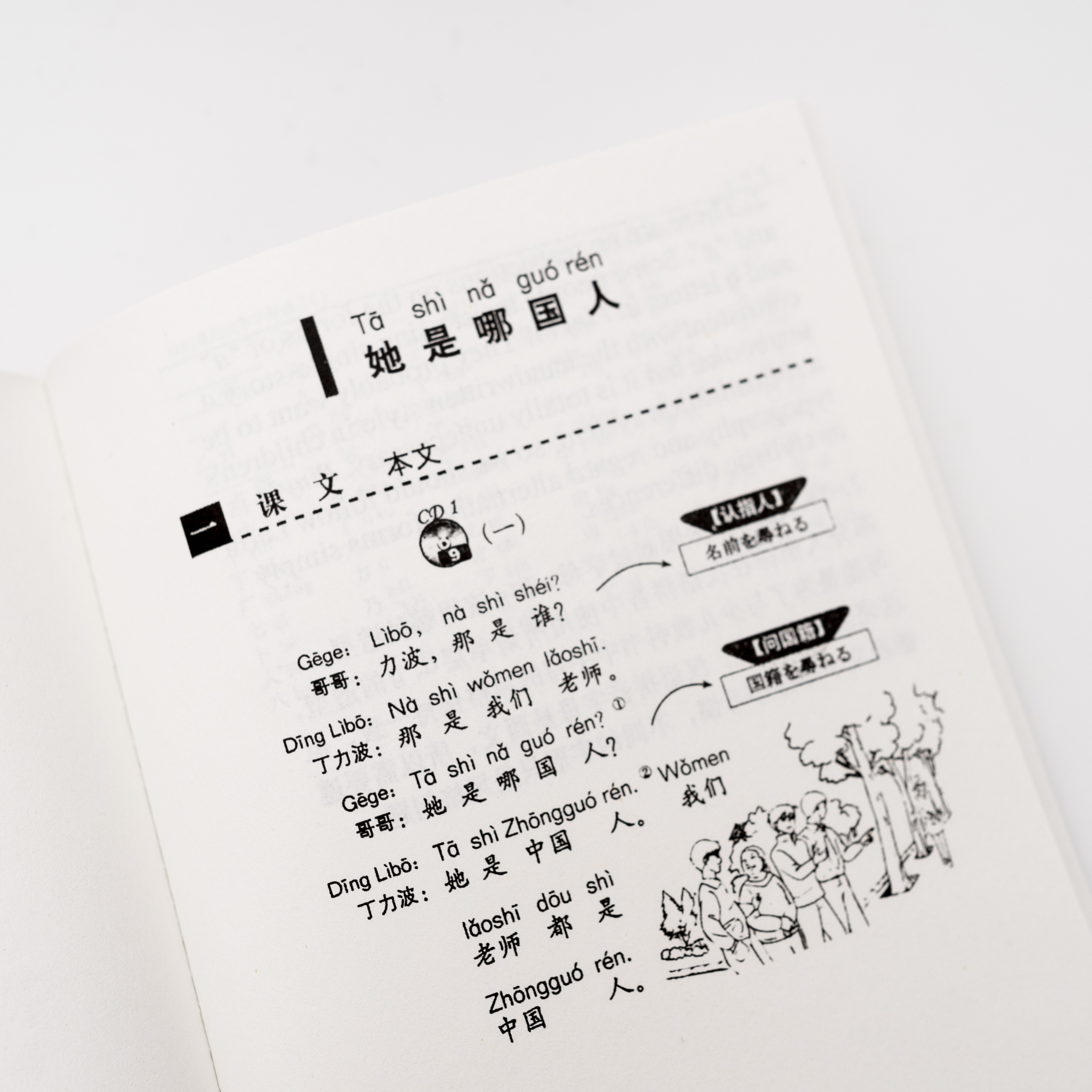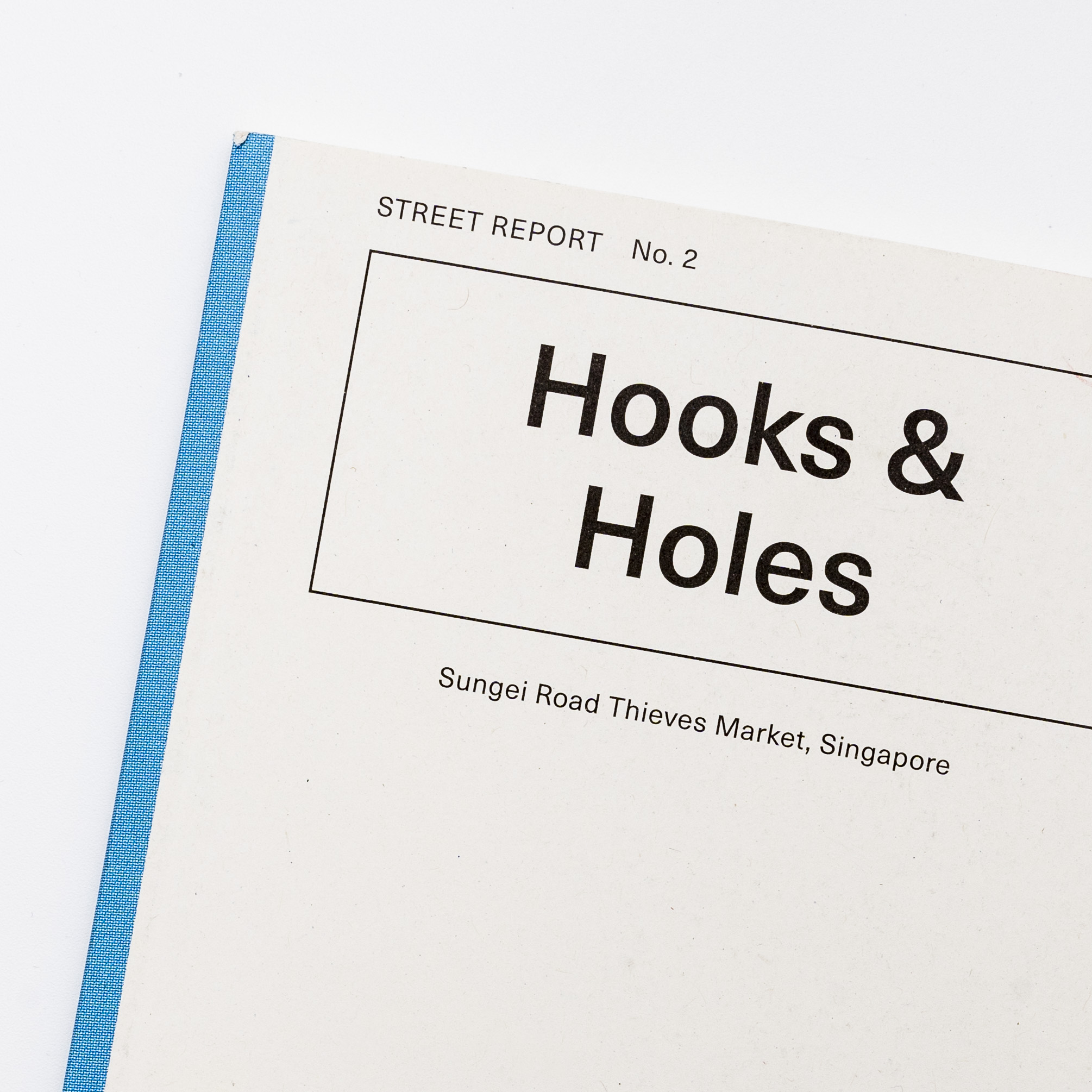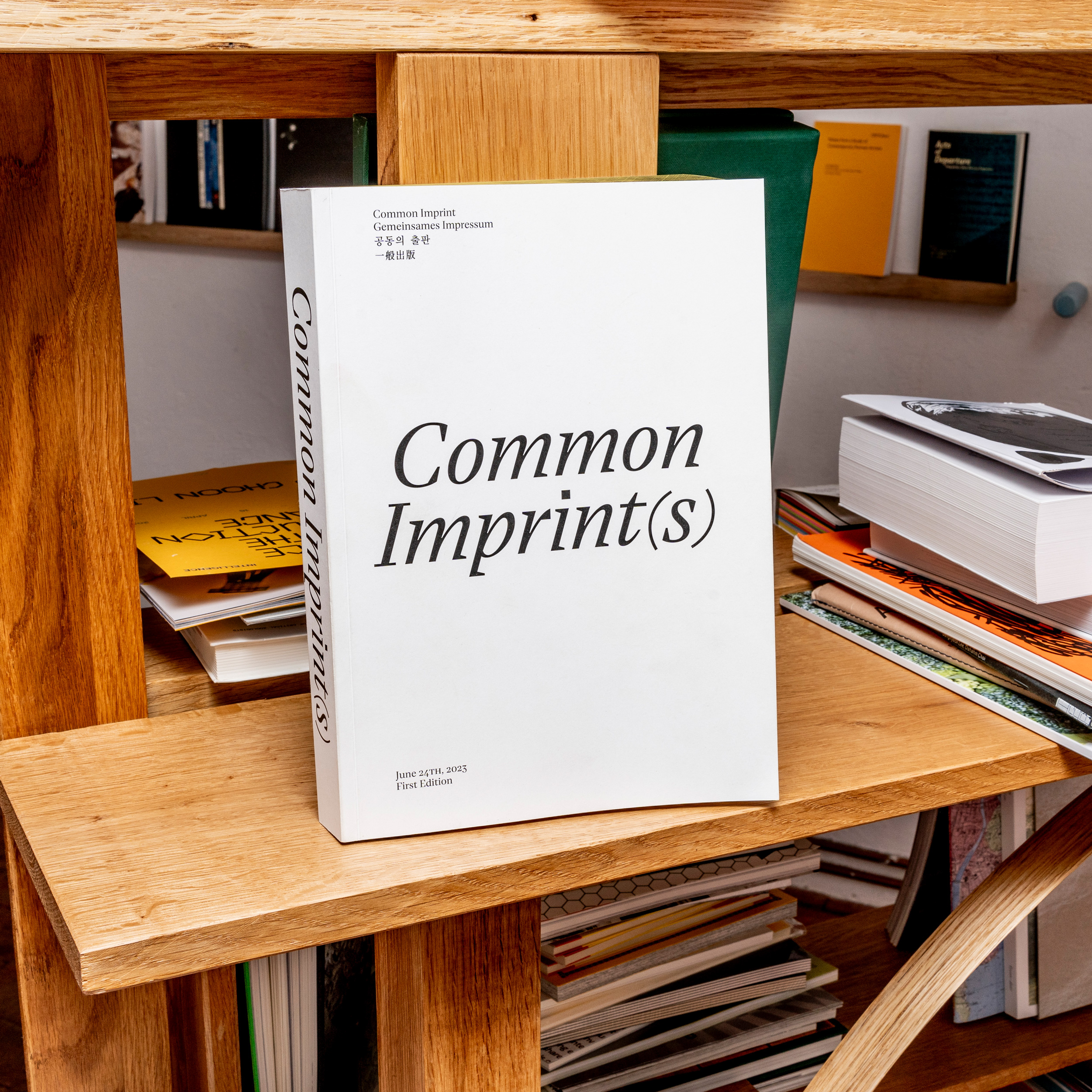Interview
Common Imprint, a Platform For Asian Independent Publications in Berlin
Interview with Sam Kim
 ©Common Imprint
©Common Imprint


A view of the reading room at Common Imprint ©Common Imprint
Kim replied, "First of all, it's not easy to find Asian publications in Berlin. There are a lot of bookstores here that carry independent and art publications, but the selection of Asian publications is very limited, especially independent publications, which often don't have ISBNs, and it's hard to find these books in regular bookstores."Indeed, there are dozens of thematic and independent bookstores in the city of Berlin, but none has a large selection of Asian independent publications or focuses on them. If an Asian publisher or author is just represented at the annual Book Art Fair, it's for a little less than a week. This is not simply due to the geographical distance between Asia and Europe. Consider that the work of European-based publishers, graphic designers, and bookmakers are consistently available in independent bookstores, book art galleries, and art museum bookstores in Korea.
"Germany has a long history of publishing, so there are a lot of publishing houses that are large and well-established in their own system. There are also some large publishing houses that specialize in art publications and handle the entire process from planning, printing, and distribution on their own. These publishers are able to distribute their books without the need for local distributors in Asia. On the other hand, it is difficult to find a wide range of Asian independent publishers here in Berlin, as the distribution channels from Asia to Europe are not as clear-cut."
The reading room of Common Imprint, which is currently open by appointment, features more than 400 publications from East and Southeast Asia. Most of them were chosen in collaboration with The Book Society in Seoul, which first proposed the reading room project, and were brought to Berlin by Kim after he obtained them at book fairs. As I perused the shelves in the reading room, my eyes naturally lingered on the exhibition catalogs, catalogs of art collections, and magazines published in Korea. I paused for a moment in front of books published in an unfamiliar language. As I turned the pages, I was intrigued by the subtly different page layouts and organization of the books.
Kim said he had a few principles in mind when organizing the collection in the reading room. He focused on books that contained both their original language and English or those that were in the original language alone but had striking images, illustrations, or design elements. He also carries books that have played a significant role in understanding one or another region.
"This series published by The Type is a typographic study of Chinese typefaces,” Kim said. “The Latin alphabet is assembled around a baseline, while CJK (Chinese-Japanese-Korean) is arranged and designed in squares. It's an introduction to the history of typography and typesetting in China, but you can also connect it to the character design of Korean and Japanese”.
![]()
![]()
Kŏngquè–restoring the mindset of Chinese typesetting, The Type ©The Type
![]()
![]()
Repeal and Rage ©Anonymous
Kim said he had a few principles in mind when organizing the collection in the reading room. He focused on books that contained both their original language and English or those that were in the original language alone but had striking images, illustrations, or design elements. He also carries books that have played a significant role in understanding one or another region.
"This series published by The Type is a typographic study of Chinese typefaces,” Kim said. “The Latin alphabet is assembled around a baseline, while CJK (Chinese-Japanese-Korean) is arranged and designed in squares. It's an introduction to the history of typography and typesetting in China, but you can also connect it to the character design of Korean and Japanese”.


Kŏngquè–restoring the mindset of Chinese typesetting, The Type ©The Type


Repeal and Rage ©Anonymous
Kim recently traveled to the Sharjah Art Book Fair (Focal Point 2022) and the Singapore Art Book Fair. The Sharjah Art Book Fair, held in the United Arab Emirates, was an invitation-only event that brought together publishers and authors from Mexico City, Cairo, New Delhi, and Keiwu, as well as publishers from other cities in Africa, the Middle East, and Central Asia. Seeing publications from Germany, Korea, and elsewhere that were not readily available in person in Berlin, as well as conversing with the people involved, strongly motivated Kim to realize the reading Kim. He was also impressed by the Singapore Art Book Fair.
The flea market officially closed in 2017 and its former vibrancy has been reduced to a trace on the road that is easy to ignore. Rediscovered through the eyes of designers, however, these traces stand as historical markers, documented in the photographs and text of this book.


Street Report No2–Hooks & Holes, Temporary Press, ©Faiz Bin Zohri
 Poster designed by Siyu Mao ©Common Imprint
Poster designed by Siyu Mao ©Common ImprintKim continued, "At the book fair, I also met the owner of Grey Projects, Jason Wee. Almost for 15 years, Grey Projects has been running a physical space called Grey Projects Library where you can browse through hundreds of publications collected from Singapore and Southeast Asia, and they also organize artist residencies and exhibition projects. Not long ago, Jason visited with some of the books published by Grey Projects."
The way Kim describes the Gray Project gives me a glimpse of what he'll be creating in the reading room. As a graphic designer, he had been following his own visual rules, mostly on a screen or on the page. Now, he has taken on the role of "project owner" and emphasizes the importance of platforms where publishers, writers, and the general public can meet, especially those that feature independent publications. Like the full name of the reading room, which is written in English, German, Korean, and Chinese, “Common Imprint, Gemeinsames Impressum, 一般出版,” he doesn't emphasize any regional identity, nor does he lump the different attractions of independent publishing together when he discusses the items he carries. Instead, he speaks of the reading room as a place where the value and artistry of each book can be extended from the page to the space, and connect people from different cultures. He and his colleagues might be busy welcoming anyone who loves independent publishing even at this moment.
- Publish date: 19. 9. 2023.
- Publication: Design Press, Seoul
- Provide images and Interview with: Sam Kim (the co-founder of Common Imprint)


